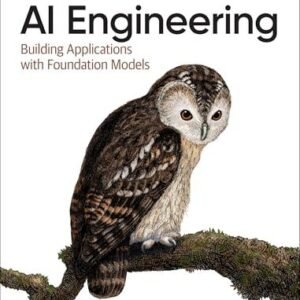As artificial intelligence (AI) continues to permeate various sectors of society, the necessity for advanced hardware technology has become increasingly apparent. The past few years have witnessed significant breakthroughs in computing architectures, semiconductor materials, and energy-efficient processors, paving the way for AI systems that are faster, smarter, and more capable than ever before. From the development of specialized AI chips to innovative neuromorphic computing designs, these advancements are reshaping the landscape of machine learning and data processing. In this article, we will explore the pivotal hardware innovations that are driving the next wave of AI revolution, illustrating how these technologies not only enhance computational power but also support the ethical and sustainable deployment of AI systems in the future.
Table of Contents
- Advancements in Quantum Computing and their Impact on AI Performance
- The Role of Neuromorphic Chips in Enhancing Machine Learning Efficiency
- Exploring the Integration of Photonic Technologies in AI Hardware Development
- Recommendations for Industry Leaders on Adopting Next-Gen Processing Solutions
- In Conclusion
Advancements in Quantum Computing and their Impact on AI Performance
Recent advancements in quantum computing are setting the stage for a transformative leap in artificial intelligence (AI) capabilities. By harnessing the principles of quantum mechanics, researchers are developing systems that can process information at speeds unimaginable with classical computers. This breakthrough is characterized by several key features, including:
- Superposition: Where quantum bits (qubits) can exist in multiple states simultaneously, leading to enhanced computational power.
- Entanglement: Allowing qubits that are entangled to work together over distances, enabling faster data transfer and processing.
- Parallelism: Quantum systems can execute multiple calculations at once, which is particularly beneficial for complex AI algorithms.
The implications of these advancements for AI are profound, paving the way for numerous applications that require immense computational resources. For example, quantum-enhanced machine learning algorithms can analyze vast datasets more efficiently, improving predictive analytics and decision-making. The following is a brief illustration of some anticipated impacts:
| Impact Area | Quantum Advantage |
|---|---|
| Natural Language Processing | Faster language model training and better context understanding. |
| Optimization Problems | Solving complex optimization problems in real-time. |
| Computer Vision | Enhanced image recognition capabilities via rapid analysis. |
The Role of Neuromorphic Chips in Enhancing Machine Learning Efficiency
Neuromorphic chips represent a groundbreaking approach to processing information, mimicking the way human brains operate to achieve greater efficiency in machine learning tasks. These chips utilize an architecture that relies on spiking neural networks rather than traditional binary operations, allowing them to process vast amounts of data in real-time. This innovative method offers several advantages, including:
- Lower Power Consumption: Neuromorphic chips can perform complex computations while using significantly less energy than conventional hardware.
- Faster Data Processing: They enable rapid processing of temporal data, making them ideal for applications requiring instantaneous decision-making.
- Enhanced Learning Capabilities: By emulating the mechanisms of biological synapses, these chips can adapt and learn more akin to natural intelligence.
Recent research indicates that integrating neuromorphic chips into machine learning frameworks can lead to substantial improvements in both speed and accuracy. For instance, when applied to image recognition tasks, these chips have demonstrated a remarkable ability to classify images not only faster but also with fewer labeled examples, significantly reducing the need for extensive training datasets. The following table illustrates a comparison of traditional chips versus neuromorphic chips in terms of key performance metrics:
| Metric | Traditional Chips | Neuromorphic Chips |
|---|---|---|
| Power Consumption (W) | 100 | 1 |
| Processing Speed (GOPS) | 1,000 | 10,000 |
| Training Data Requirement | Thousands of examples | Hundreds of examples |
Exploring the Integration of Photonic Technologies in AI Hardware Development
As the demand for faster and more efficient AI computations continues to soar, the integration of photonic technologies into AI hardware is emerging as a game-changer. Unlike traditional electronic systems, which rely on electrical signals to process data, photonics utilizes light to transmit information. This allows for significantly increased bandwidth and lower latency, making photonic processors particularly suitable for handling the massive datasets required by modern AI algorithms. Recent advancements have shown promise in developing optical neural networks, capable of performing parallel computations much more efficiently than their electronic counterparts.
Key areas where photonic technologies are making waves in AI hardware development include:
- Improved Speed: Light-based systems can achieve processing speeds that far exceed that of conventional electronics.
- Energy Efficiency: Photonic circuits consume less power, reducing the operational costs associated with large AI models.
- Integration with Existing Technologies: There is an ongoing effort to create hybrid systems that combine photonic and electronic components, harnessing the best of both worlds.
| Metric | Photonics | Electronics |
|---|---|---|
| Speed | 100 Gbps+ | 10-20 Gbps |
| Power Consumption | Low | Higher |
| Scalability | High | Medium |
Recommendations for Industry Leaders on Adopting Next-Gen Processing Solutions
As the pace of AI innovation accelerates, industry leaders must prioritize the adoption of next-generation processing solutions that enable faster and more efficient data handling. Investing in specialized hardware such as tensor processing units (TPUs) and field-programmable gate arrays (FPGAs) can drastically enhance computational performance. To effectively implement these advancements, organizations should consider the following approaches:
- Conduct a thorough assessment of current processing capabilities and identify bottlenecks in AI workloads.
- Engage with hardware manufacturers to explore scalable processing technologies tailored to specific business needs.
- Foster collaborations with academic institutions and tech partners to stay updated on emerging hardware breakthroughs.
Furthermore, training and upskilling teams on the latest hardware and software integrations is essential for a successful transition. Organizations can create a resilient infrastructure that not only supports current demands but is also agile enough to adapt to future technological shifts. A proactive strategy should include:
- Developing a clear roadmap for integrating next-gen technologies into existing systems.
- Establishing a regular review framework to assess the effectiveness of new processing solutions.
- Encouraging a culture of innovation where employees are empowered to experiment with cutting-edge tools.
In Conclusion
the realm of artificial intelligence stands on the precipice of a transformative era, largely driven by groundbreaking advancements in hardware technology. As researchers and engineers continue to innovate, the synergy between AI algorithms and powerful computing platforms promises not only to enhance processing capabilities but also to unlock new applications across diverse sectors. The strides made in semiconductor design, neuromorphic computing, and quantum technologies are setting the stage for unprecedented improvements in efficiency and performance. As we move forward, it will be crucial for industry leaders and policymakers to collaborate in harnessing these innovations responsibly, ensuring that the benefits of advanced AI hardware are accessible and equitable for all. The future of AI beckons with immense potential, and the hardware breakthroughs of today are paving the way for tomorrow’s revolutionary applications.





